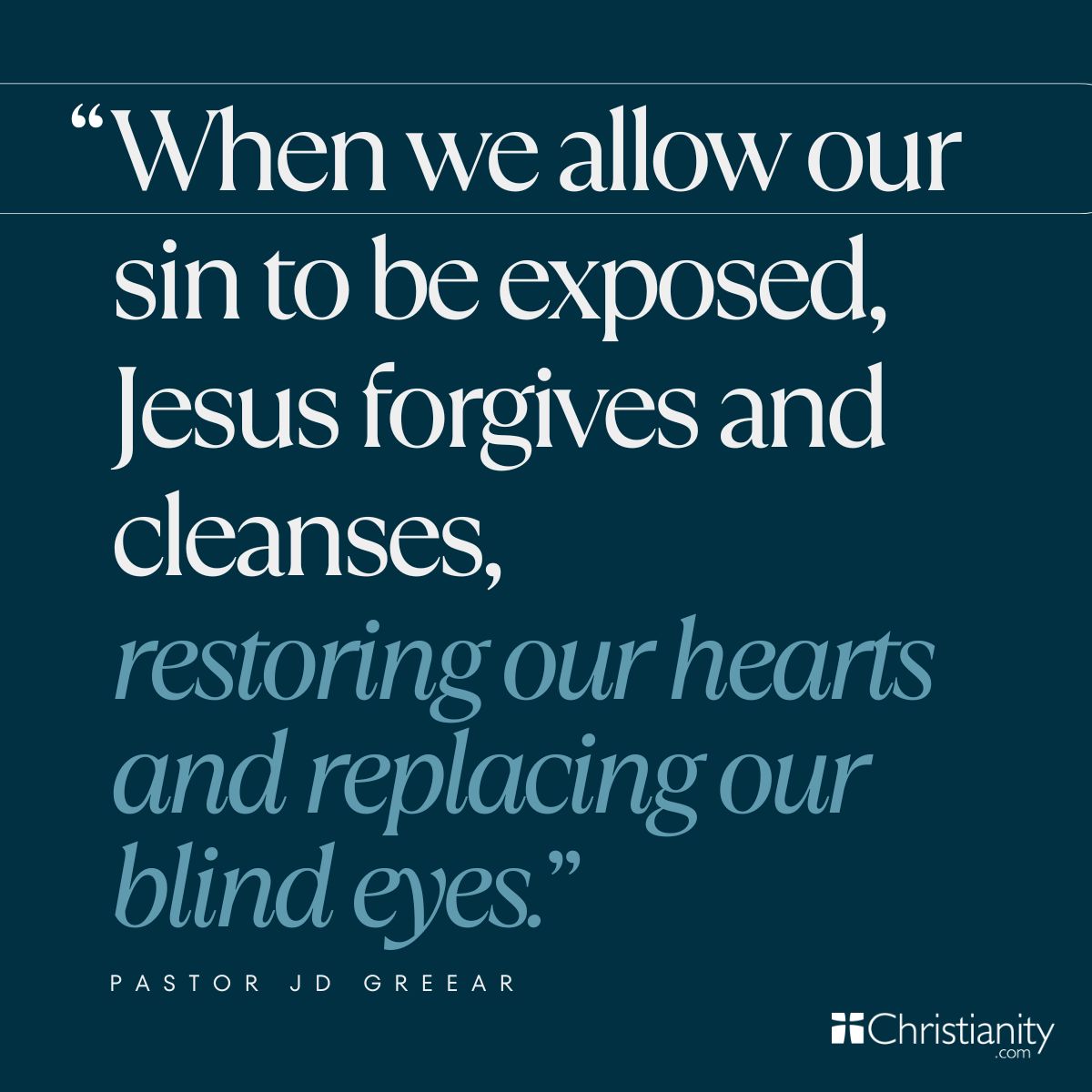
Growing up, I needed two things to feel safe at night: The first was the soft glow of a nightlight, and the second was for the closet door to be shut. I don’t know what it was about that closet, but it seemed like the pit of darkness. I just knew there were demons in that dark hole staring out at me. There was a deception and uncertainty about the darkness.
Light, on the other hand, is associated with honesty and integrity. When some wrongdoing is uncovered, we say it’s being “brought to light.” Light brings beauty. Science teaches us that the color we see around us results from reflected light.
Light is also essential for life and fundamental to existence itself. Without light, major parts of our food chain would be disrupted, and the world as we know it would cease to exist. More than that, light is the only constant. Einstein’s theory of relativity, E=MC2, shows as much because though energy (E) and mass (M) are variable, light (C) never changes.
So when Jesus said he’s the light of the world in John 8, he said, “I’m the color. I’m the beauty. I’m the life. I’m the constant that holds all things together.”
We see this first in John 8:1–11 with the woman caught in adultery. (It’s important to note that while many scholars argue this story wasn’t included in John’s original manuscripts, the story is consistent with Jesus’ teachings and how John talks about Jesus—throughout the rest of his Gospel and in 1 John. And there’s no question that this story was passed around in the early church. That’s why I include it here.)
The story goes like this: A woman who had been caught “in the very act of adultery” was brought to Jesus. Suspiciously, there’s no mention of the man. Perhaps it was a setup? Perhaps they were just being sexist? We can’t be sure, But whatever the reason, she stands before Jesus and the Pharisees—guilty and ashamed. The Pharisees are prepared to stone her according to the law, yet they ask Jesus an insincere question of what they should do. They wanted to get Jesus on the record—either ordering a woman’s death (which makes him look heartless) or denying the law (which makes him look like he doesn’t value God’s Word). It was a trap.
Instead of answering them, Jesus knelt down and started to draw in the dirt. (What was he drawing? We don’t know.) So they kept pestering him. Finally, Jesus answered, “Whoever has no sin should throw the first stone.”
Realizing that was not a boast they wanted to make, each of the Pharisees dropped their rocks and went home until only Jesus and the woman remained. Jesus turned to her and asked, “Where are your accusers?” And she replied, “None remain, Lord.”
I love Jesus’ last statement to her: “Neither do I condemn you; go and sin no more.”
When something isn’t pretty, our first instinct is to hide it, to keep it in the dark. But here’s the thing about light: It exposes. Like Jesus to the Pharisees, like the woman to her sin. When we see ourselves in the true light of God’s glory, I can only imagine what we look like morally. Me? I’d be like Adam and Eve, wanting to hide.
And yet, here we find a woman standing next to the most morally pure being to ever walk the earth. This raises the question: What is it like to stand completely exposed in all our sins in the presence of Jesus?
The answer: It’s safe.
In 1 John, John says, "If we walk in the light, as he is in the light ... the blood of Jesus cleanses us from all sin. … If we confess our sins, he is faithful and just to forgive us our sins, and to cleanse us from all unrighteousness” (1 John 1:7, 9 ESV). In other words, if we bring our sins and our shame to Jesus as this woman did, he will forgive and cleanse us.
The irony of the gospel is that if we expose and confess our sins to Jesus, he will cover them. But if we cover them from him, Jesus will one day expose and judge them. Too often, we’re afraid to bring our guilt, weakness, failure, and shame to Jesus. We think it’s too dangerous. But the opposite is true: Confessing our sin is the only safe bet. “There is a fountain filled with blood drawn from Immanuel’s veins! And sinners plunged beneath that flood lose all their guilty stains!”
Jesus’ light is not just a revealing light; it’s a healing light. In John 9:5, made the same “I am” statement a second time: “I am the light of the world.” Only this time, the context was him healing a man who had been blind from birth.
Typically, if someone is in the presence of a bright light, the light is no longer helpful but harmful. In John 9, we have the brightest of all lights—Jesus—but instead of causing more blindness, he heals it. Instead of judging and shaming sin, he forgives and covers it.
Many of us feel like we’re too dirty, damaged, deceptive, or disqualified for Jesus, but Jesus’ light is sight-giving and cleansing. When we allow our sin to be exposed now, Jesus forgives and cleanses, restoring our hearts and replacing our blind eyes.

The irony of the most brilliant light in the universe is that it not only reveals defilement but also heals it; it doesn’t cause blindness; it cures it because at its center is a cross, the point of greatest darkness.
Ezekiel 10 records that Ezekiel saw the light of God’s presence leave the temple to hesitate at the threshold, depart from Jerusalem by way of the east gate, and ascend up the Mount of Olives and into heaven—seemingly forever. Years later, when Jesus made his triumphal entry into Jerusalem, he took the most unusual route. Matthew tells us that Jesus first ascended the Mount of Olives, then rode a donkey down into Jerusalem, where he entered by the east gate. The first place he went? The temple. He was reversing Ezekiel 10.
The light had returned.
Instead of the story ending with the light of the world enthroned in the Holy of Holies, it ends with Jesus hanging in shame and darkness on a cross. The Gospel writers tell us that when Jesus died on the cross, an unusual darkness settled over the land in the middle of the day. The curse of our sin and death had seemingly extinguished the light of the world. And then, the light of the world was placed into the cold, dark confines of a grave and sealed up forever.
But death could not hold him—darkness could not overcome him—and at dawn on the third day, just as the sun began to illuminate the day, the light of the world walked out of the grave. And Jesus proved himself to be our revealing and healing light—because the light of the world first absorbed our darkness.
Photo Credit: SWN Design

Pastor J.D. completed his Ph.D. in Theology at Southeastern Baptist Theological Seminary. He serves as a member of the Board of Directors of Chick-fil-A, serves as a Council member for The Gospel Coalition, and recently served as the 62nd president of the Southern Baptist Convention. Pastor J.D. and his wife Veronica are raising four awesome kids.
"Editor's Note: Pastor JD Greear's "Ask the Pastor" column regularly appears at Christianity.com, providing biblical, relatable, and reliable answers to your everyday questions about faith and life. Email him your questions at [email protected]."




.jpg)